For field notes after 10/14/2014, see Rozemarijn Landsman's field notes page
10/14/2014, morning
NAME: Rozemarijn Landsman & Jonah RowenDATE AND TIME: 10/14/2014, 9:00-11:00
LOCATION: Morningside Heights
SUBJECT: Sand Casting - Making Sand & Sand Mold
We began with a comparison to commercial foundry sand brought by Tonny Beentjes as a model for the consistency and granularity of the sand that we were attempting to make, according to BnF. Ms. Fr. 640, folio 118v. Accordingto Tonny, the binder in the foundry sand was oil. That sand was bright reddish/orange in color was dry and crumbly, similar in consistency to brown sugar, but drier. As a test, Tonny recommended two tests for sand: to toss a clump of it in the air, and if nothing came off then it was coherent enough; also, to be able to press it in a fist and it would keep its shape.
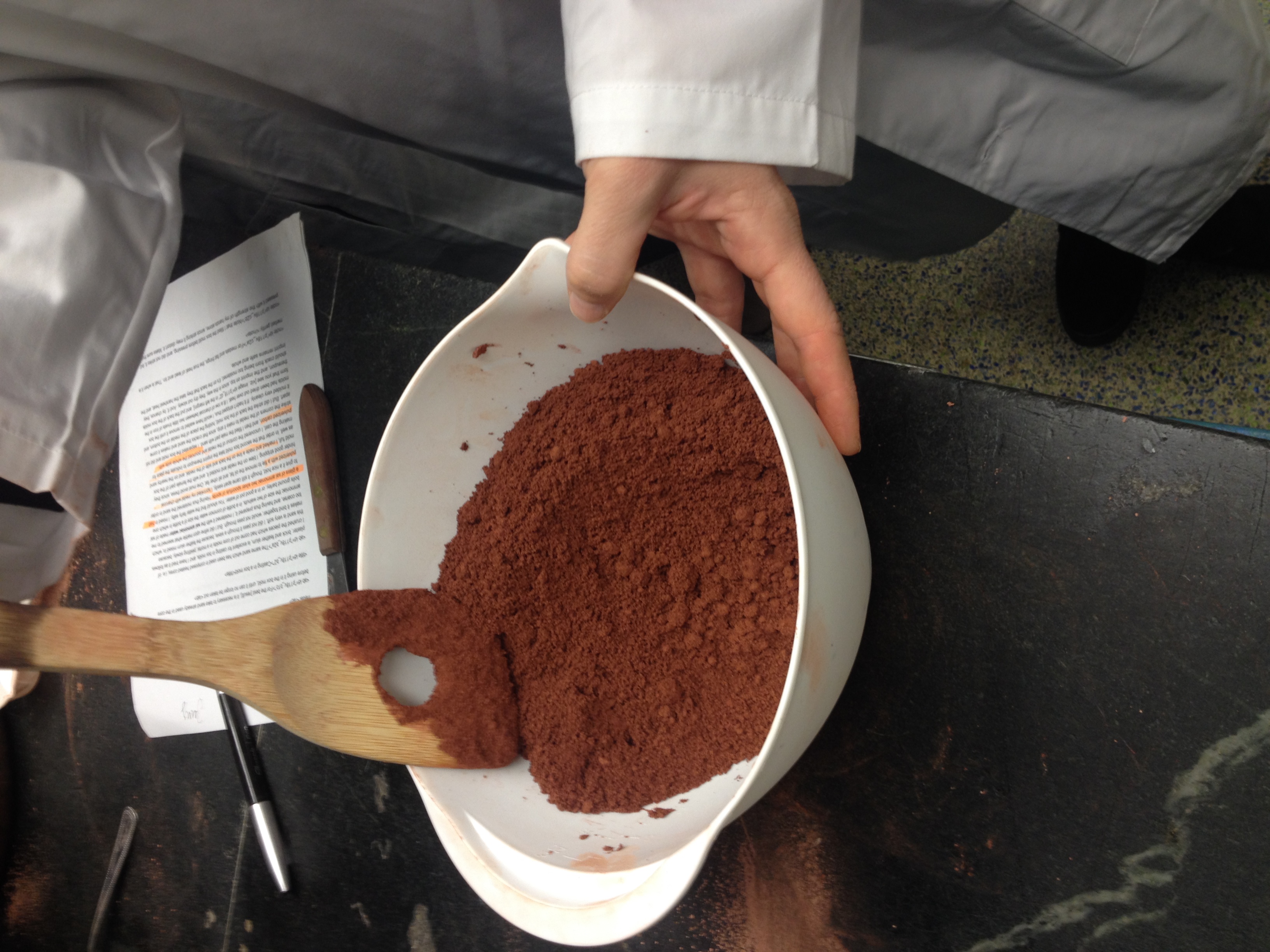
We cleared off a large space on the counter of the lab, and with a mixing bowl. We measured three cups of dry red clay, which we sifted to slightly less; after sifting, only very small pieces (coarse grains) of red clay were left in the sieve. The clay was fine enough that it packs on its own. Sifting took more force than we expected.
The manuscript did not give clear instructions for measurements, so those were uncertain. We started with the following proportions:
3 cups red clay
1/2 cup sal ammoniac (recipe specifies "half a glass of sal ammoniac")
2 tbsp. brandy
The mixture smelled strongly of brandy, and was hard to mix. We started mixing with a small spackle knife, but switched to a wooden spatula. The mix seemed very dry and still crumbly compared to the foundry example, and we discussed adding more liquid. We consulted with Tonny, who recommended adding slightly more liquid, although said that we were not far off. We added another 1/4 cup of sal ammoniac and 1 tbsp. brandy (another half measure of the liquids), making the proportions:
3 cups red clay
3/4 cup sal ammoniac
3 tbsp. brandy
The mixture did not combine easily, and we observed that it might be easier to mix with hands. We began mixing at 10:10, and mixed for about twenty minutes, at which time the sand appeared thoroughly mixed. It seemed very dry still, and quite lumpy. We observed also that the pre-mixed foundry sand seemed finer than ours. By this time the alcohol smell was no longer present, and instead the sand had a more earthy/moist smell. It seemed very dry, but we tested it by packing it into the bottom of an iron box mold, and it held together very well. The box mold does not have a bottom; Tonny explained that this helps in the casting process because gases can flow out through the porous sand. He also suggested that the author of the manuscript would have probably kept grinding the sand finer, but for our purposes, our sand would probably do.

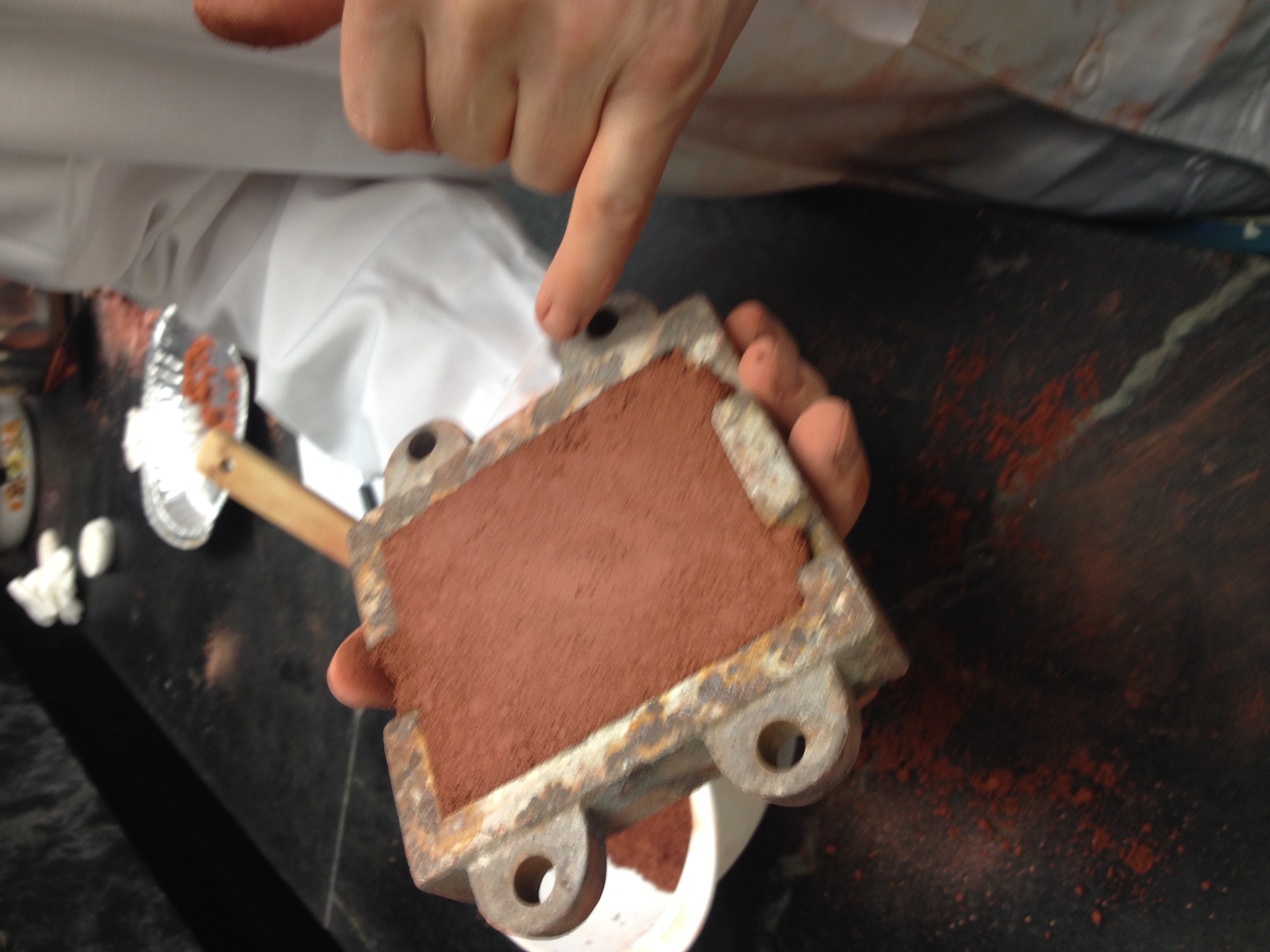

We then placed our plaster casts in the mold diagonally with one another and brushed them with charcoal dust ground with a mortar and pestle, which we subsequently blew off, to achieve a thin film of charcoal coating.
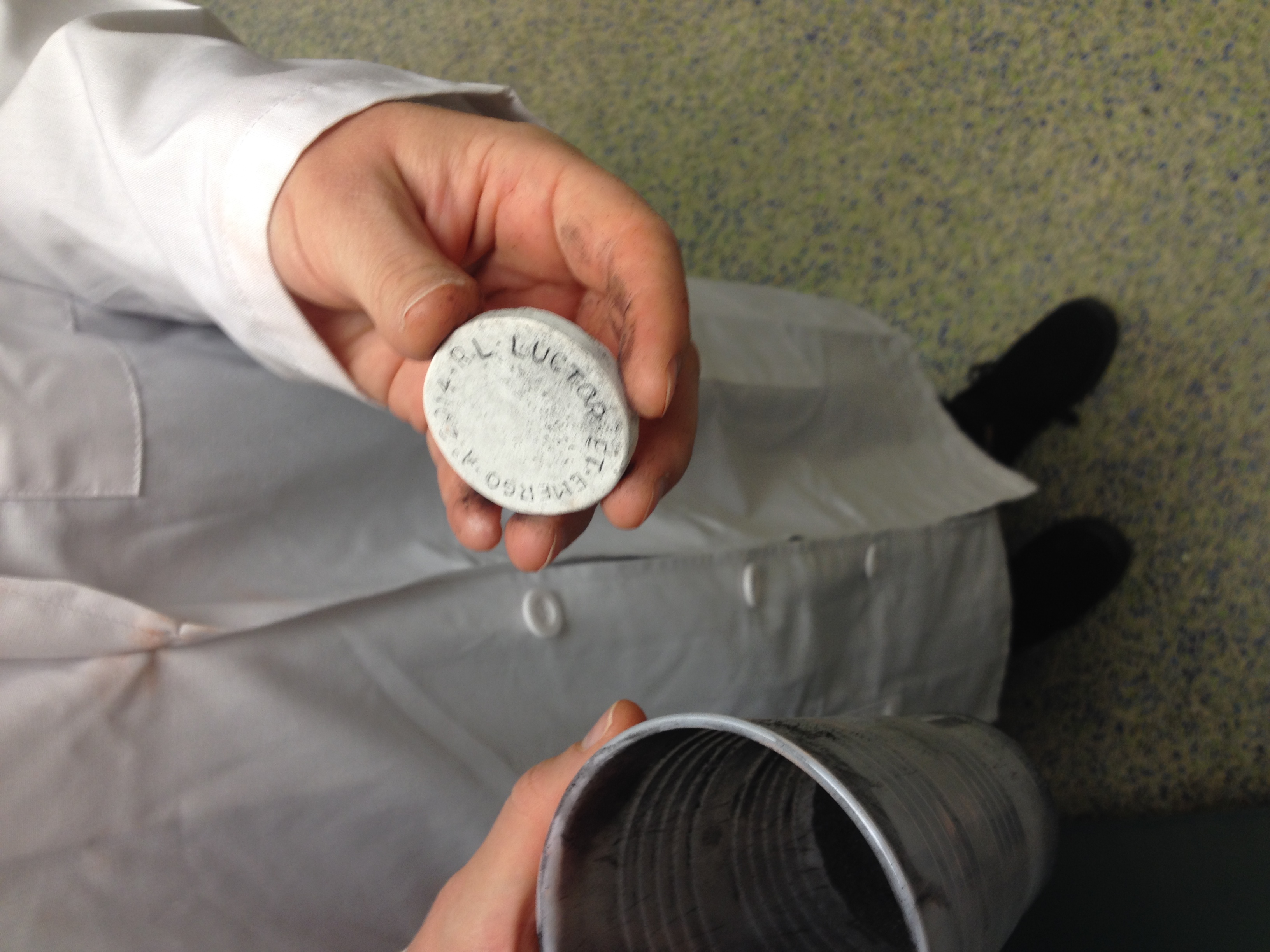

Detail in the plaster patterns emerged with the charcoal dust that was difficult to see previously. We then packed sand around the plaster casts. The sand packed densely, but looking at their positioning Tonny decided that the larger one would be too close to the place in the box mold where a channel would be cut, and that we should re-pack them. An issue of making channels between the two molds would also be the possibility of collapse when metal is poured.
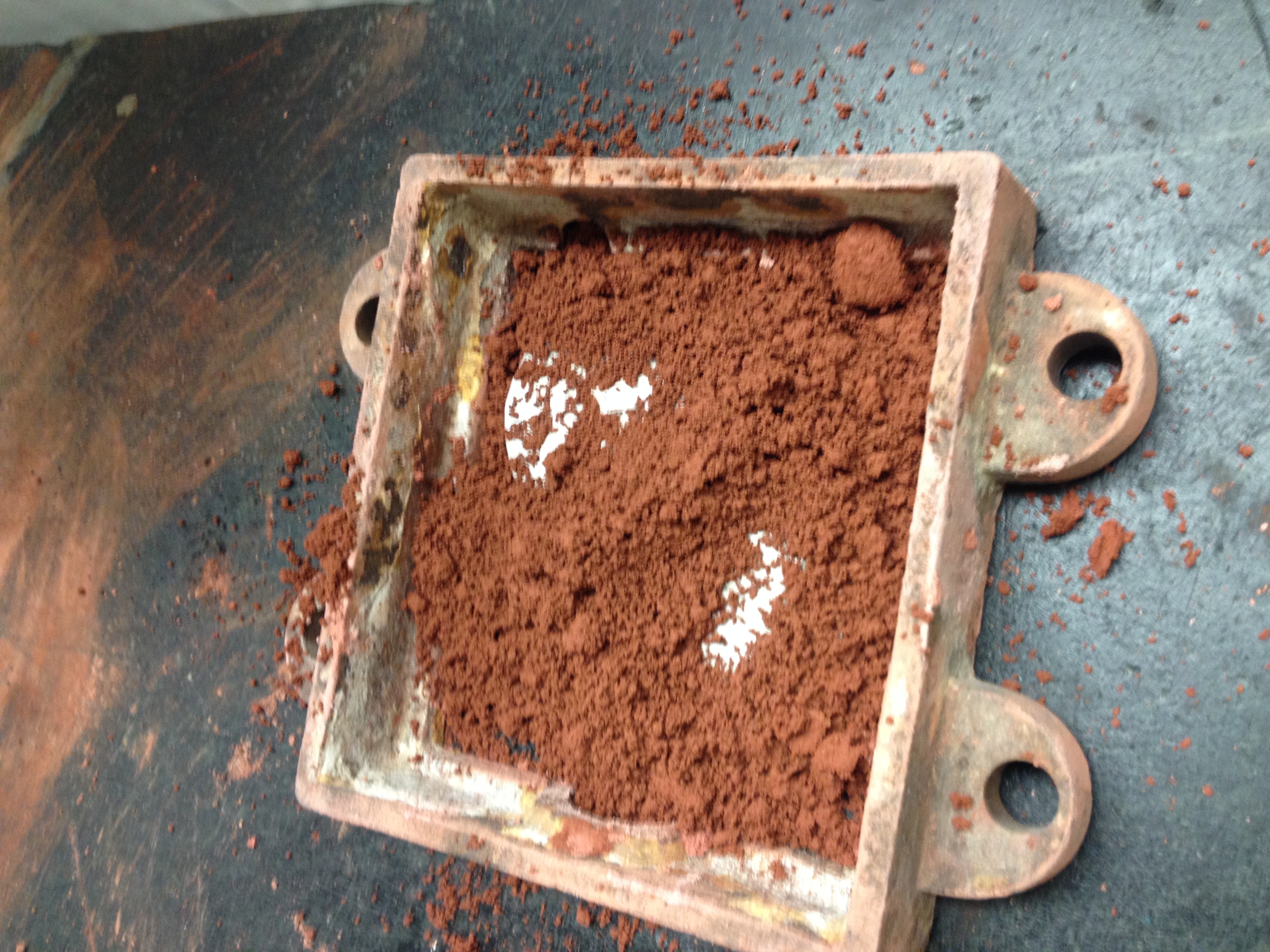
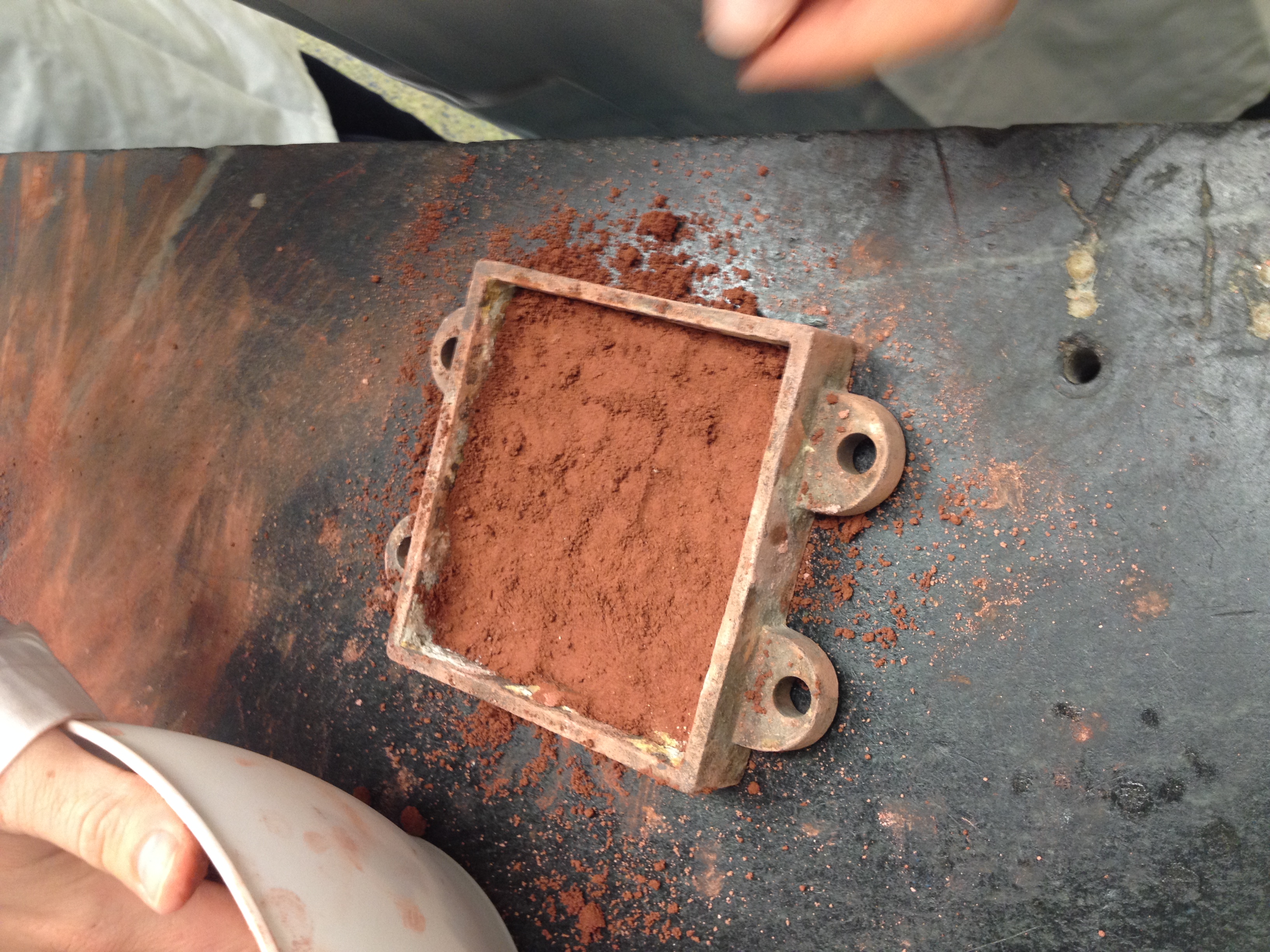
We then re-packed sand over and around plaster patterns. The sand went over the plaster because of a fear that pressing plaster into sand might break the plaster. The sand did not pack as easily this time, and appeared to be drying out, although by the time we got toward the top of the box mold the sand felt very wet. We again emptied out the mold, and discovered that moisture had made its way onto the plaster surfaces. For the larger one (Rozemarijn's) this was not a problem, but for the smaller (Jonah's), which had very low-relief from the start, much of the detail that had made it into the surface of the plaster had been erased. As a means of working around this issue, we decided to remove that plaster disc and substitute it for the medallion from which it had been cast (instead of carving wax, this wax pattern had been poured over/cast from a medallion).
We also discovered this time that the quantity of sand that we began with would not be adequate to fill the two sides of the box mold, so we made a new batch from 2 cups of red clay and about 2/3 of the other ingredients from the second set of proportions above.
Once again, we began packing sand, but this time instead of doing it around the patterns (now a metal medallion and a plaster disc from cast clay around a carved piece of beeswax), we just packed the entire bottom half of the box mold. Once this was done, we skimmed off the top of the sand with a knife. We then pressed the medallion into the sand, which left a good impression, and attempted to press the plaster disc in as well. This did not work, and we were afraid that with any more pressure the plaster might break. Instead we placed the plaster facing upwards (rather than pushing it downwards), coated the entire top layer of the bottom half of the box mold with more charcoal dust, and began to pack sand again for the top half of the box mold. The consistency of this sand started out apparently well, but gradually seemed wetter as we packed more sand in. By the time we got to the top of the box mold, the sand was quite moist to the extent that pushing on the sand made it move around. It felt as though there were air bubbles—there were not—and in order to mitigate the sand's wetness we added more red clay powder. This helped to soak up much of the sand's moisture, but it appeared also to decrease much of the function of the binding agent. Cracks began to appear at the top of the mold. We added a very small amount of brandy again, which appeared to help close some of the cracks, but the top half of the mold looked much less smooth and uniform than the bottom half had.
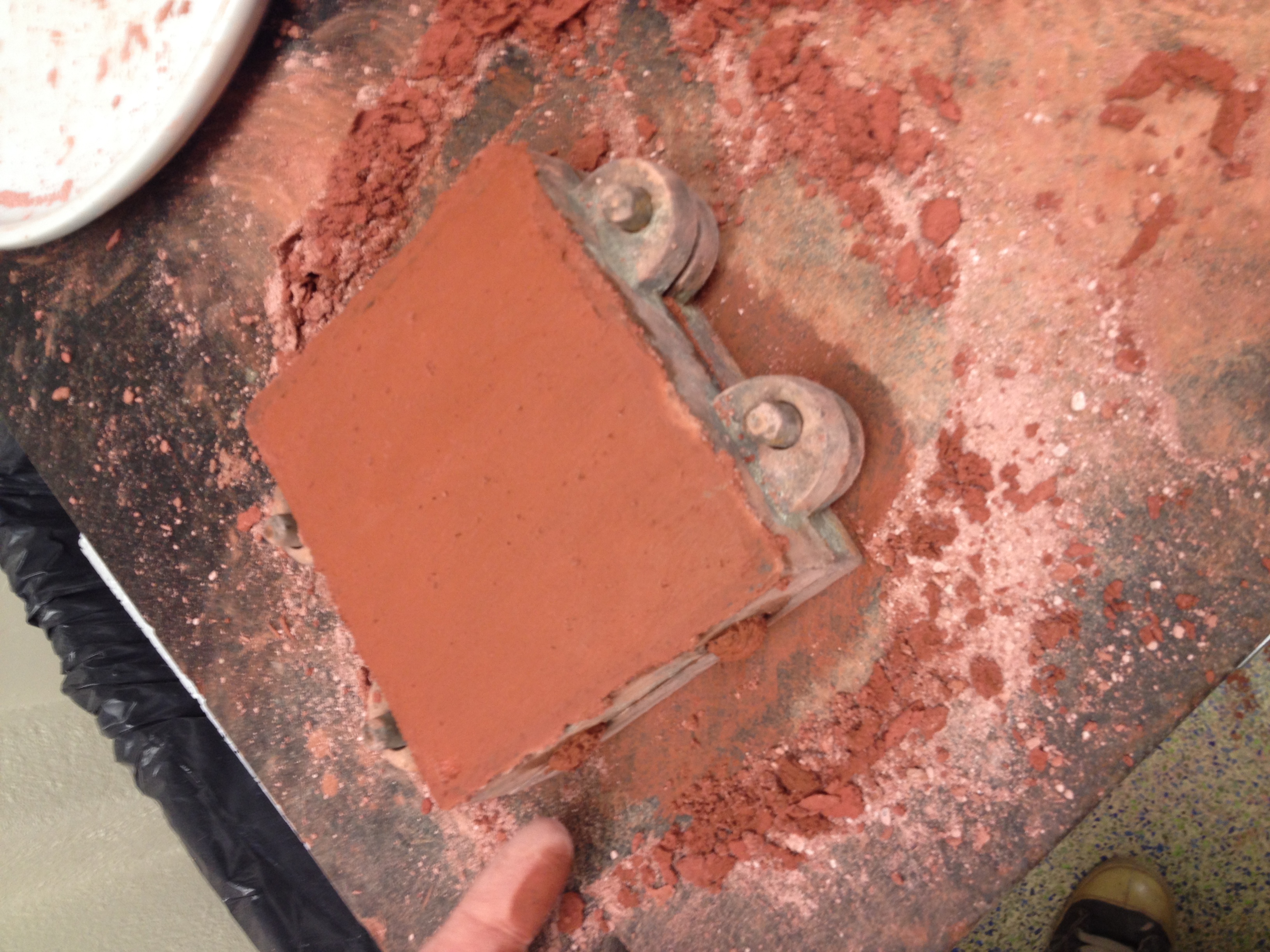

Skimming off the top layer of the sand again, we turned the mold over to find that some of the moisture had made its way down to the bottom half of the mold. We turned it over and stored it in a Zip-loc bag, in the hopes that some of the moisture on the bottom might makes its way down to the cracked side and even out again.